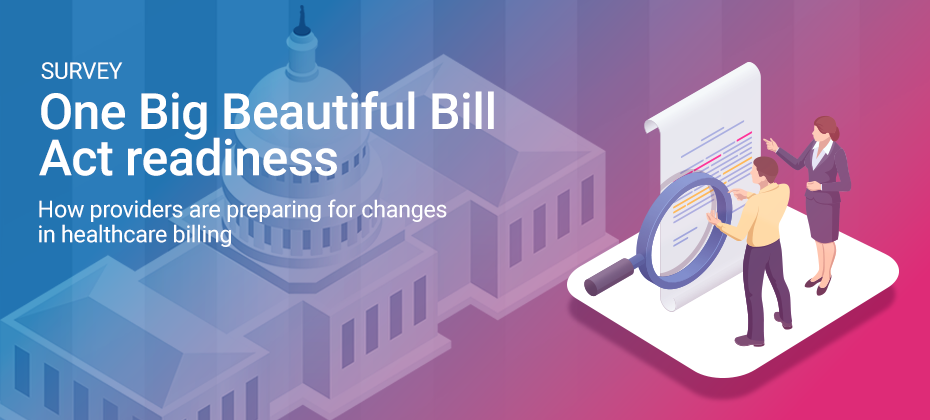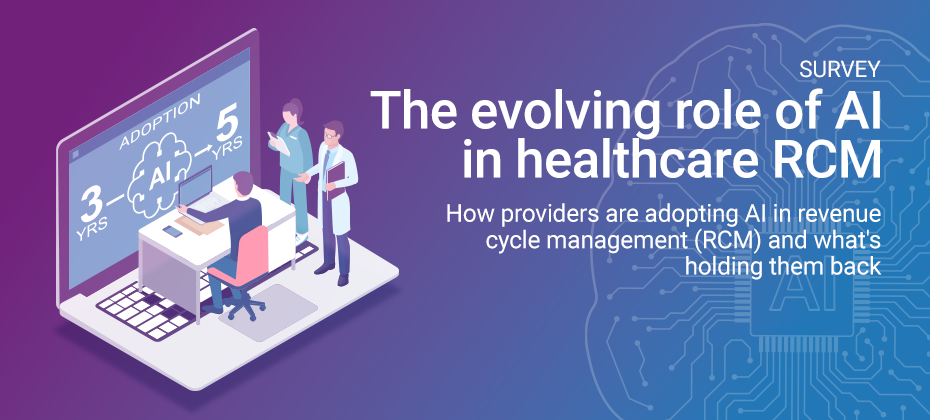All posts by Kelly Nguyen

Automated prior authorization solutions streamline workflows, simplify management across payer systems and offer advanced features to reduce manual effort — helping providers minimize denials and improve overall efficiency.

Denial management is the process of addressing why healthcare claims are rejected or denied, instead of resolving them after they occur. This article explores denial management strategies, why outdated processes fail and how AI-driven solutions can help reduce denials and streamline workflows.

Top reasons for healthcare claim denials include missing or inaccurate data, lack of prior authorizations, and incomplete patient registration.

As the healthcare industry prepares for the implementation of the One Big Beautiful Bill Act (OBBBA), it’s clear that readiness is not one-size-fits-all. Hospitals are leading the way, but most providers will need focused updates to their Medicaid/Medicare processes to ensure compliance and protect revenue. In October 2025, Experian Health surveyed 200 healthcare decision-makers to get a better understanding of their readiness levels, where they’ll be impacted and what they’re focusing on, following implementation of the OBBBA. Here are the results: To prepare for incoming changes from the OBBBA, revenue cycle leaders will need to accelerate their adoption of artificial intelligence (AI) and automated solutions. AI-powered tools, like Patient Access Curator, can help providers streamline insurance eligibility checks and improve claims accuracy. Other tools, like Patient Financial Clearance, can help providers support their patients, and minimize risks from uncompensated care. Find out how Experian Health's revenue cycle management solutions can help your healthcare organization navigate upcoming regulatory shifts and changes. Learn more Contact us

When it comes to artificial intelligence (AI) usage in the healthcare industry, adoption is steadily gaining momentum as providers explore new ways to utilize this technology in their revenue cycle management (RCM) processes. While full trust in AI remains limited, especially for high-stakes decision-making, confidence is rising. Privacy, security, and implementation costs continue to pose significant challenges. However, providers broadly agree that AI will become a cornerstone of healthcare RCM in the next few years, especially in areas like eligibility verification and patient access. Many also acknowledge that human oversight will remain essential, to ensure accuracy and trust. In October 2025, Experian Health surveyed 200 healthcare leaders to better understand how much they trust AI for decision-making, their biggest barriers to adoption, and where the opportunities lie. Here are the results: AI in healthcare RCM isn’t the future; it’s happening now. Learn how healthcare organizations are using Experian Health’s AI technology to streamline patient access and reduce claim denials. Learn more Contact us

AI and automation are transforming the claims management process. By streamlining workflows and minimizing errors, these technologies can help providers reduce denials, enhance operational efficiency and improve patient access to care.

Denied claims are rising fast, putting revenue and patient trust at risk. Automated claims management and AI-enabled tools are becoming essential for providers to reduce denials, accelerate reimbursements and improve operational efficiency.

Automated authorizations software helped USA Health transform their prior authorizations process – streamlining workflows, decreasing errors and improving staff productivity.

AI is modernizing healthcare revenue cycle management by automating manual tasks, improving data accuracy and reducing denials. This Q&A explores how healthcare organizations can utilize AI-driven tools to strengthen their financial performance.